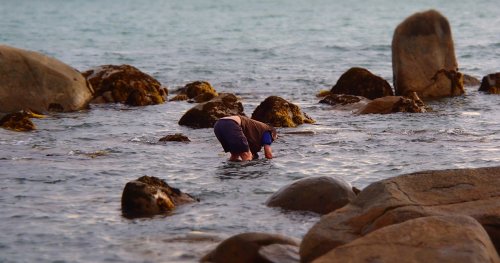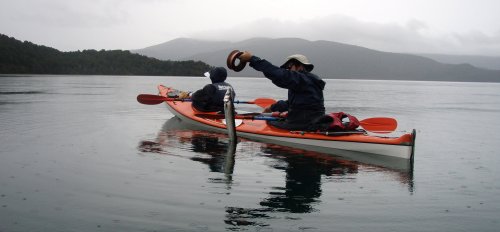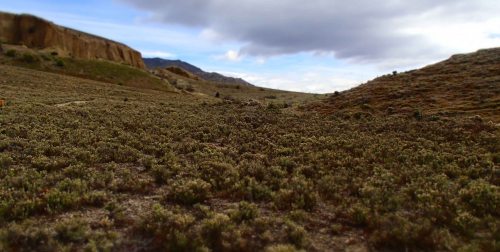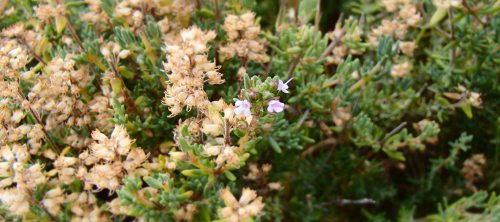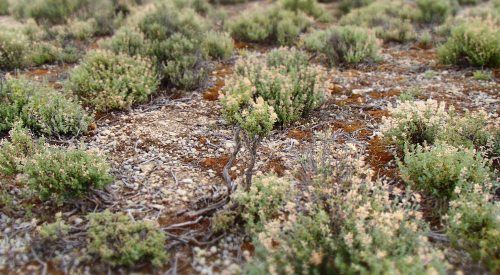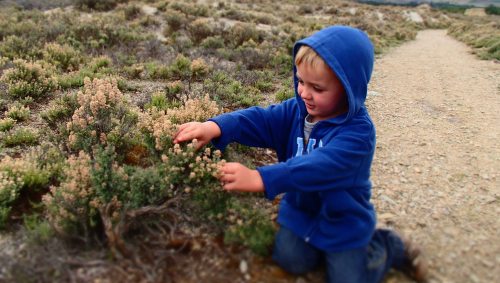
A brace of Otago bunnies
My last hunted rabbit was from our bush block, a once-ever hard-won trophy of hours of twilight stalking a place with few rabbits and just a bow and arrow to do it with. Not that I’ll give up on it; the twilight walk with bow is a beautiful way to take a stroll and bowhunting rabbits is a great challenge, relatively humane and one thing that hunting with firearms is certainly not – quiet, peaceful even, despite the mortal intent. That was a few years ago, before a child took away much of the ability to wander off at meal/bath/bedtime with the bow.
My last rabbit that was not strictly ‘hunted’ was in the rabbit capital of the world as far as I can work out – New Zealand’s Central Otago. It was ‘harvested by automobile’ (roadkill) on the way back from a fishing trip with no fish to claim for it. The front end of the bunny went under the wheel, the back end went in a pot. That was a year ago.
One month ago I was back in New Zealand (something of a second home) and was able to go after rabbits with considerably more intent on an outing with a cousin of mine. While still largely a bowhunter at heart, I am also now something of a convert to hunting rabbits with a 20 gauge shotgun. This is smaller version than the typical 12 gauge, and my cousin’s one a beautiful Turkish Huglu, accurate, light on recoil and relatively quiet. And my cousin’s godfather’s property is an even more beautiful high country station of more thousands of acres than I can work out.

It’s hard not to look like a redneck with a gun on your hip and dead animals in hand
In central Otago, rabbits are so abundant that you harvest them more than hunt them. All you need is somewhere to do it and something to do it with and you just start filling up a box. Where they scatter across steep slopes in front of you it is like an arcade game where you are more likely to fail by not choosing one in time rather than through poor aim. The time to stop harvesting is likely to be when you have about as much as you either want to process or eat. 7 rabbits in our case, as they were all basically for me, and with two weeks before returning to Australia. That said, the time to stop for others at the nearby annual ‘Easter Bunny Hunt’ was more than 23,000 in 2011 which, for charity, the local Boy Scouts then composted. I have mixed feelings about this carnage, my greatest reservation being the knowledge that hunting always treads a delicate balance between a noble approach to a respected prey solemnly killed and a descent into an instinctive bare-toothed bloodlust that can lie within any man. My insistence on eating any prey that I kill is much a discipline to keep me on the nobler side of that equation as it about any ethic held for the sake of the animal. It seems inevitable that bloodlust runs high in the Easter Bunny Hunt.

The bunny box fills
Rabbits, in both of the countries where I am a citizen, are remarkably unpopular as both wildlife and food. In Australia they still bear some of the stigma of ‘Depression food’. In the first half of the twentieth century two wars bled the countryside of too many of its young men, the Depression took farms from the smallholders, the continued industrialisation of agriculture pitted profit margin against intergenerationally improving land management, and rabbits were compounding it all by running rife in their stripping of livestock forage. Theirs was one of many contributions to the enormous loss of topsoil from which the country will never recover. Their meat was a small compensation. Hunters toiled and men rolled carts through poor city streets with their cry of “rabbitoh!” selling cheap meat; canneries shipped tonnes of the stuff to Europe; and the now-iconic Australian felt hats were pounded from the skins of one of our worst environmental disasters.
Countless miles of rabbit fence laced the country; poison baiting, gassing, warren-ripping machinery and explosives were a cost borne in billions by farmers and the state; country children kept ferrets with which they could join the fray. Eradication was the passion of many and the success of none as no amount of hunting could ever get rid of them entirely. A prey as small, numerous and fecund as rabbits in Australia and New Zealand will always rebound from the populations left when hunting returns dip to levels too low continue. Biological control from Myxomatosis in the 1950s, then Calicivirus in the 1990s, each brought significant temporary respite but were then followed by resistance that is still growing.

A Southern Highlands rabbit warren
Rabbits, it must be said, are not now problematically common in the parts of Australia I am most often in – the better watered east coast and highlands – but many parts of the country (and surprisingly large parts of cities) would consider themselves plagued. In Central Otago, rabbits are a problem by which one could almost define the region. On my land in the NSW Southern Highlands I have previously felt, I shamefully admit, that it was a problem which I could actually do with a bit more of. There, our cheap dirt is so badly structured, thin and all-in-all crappy that rabbits struggle to burrow in it, relying instead on the rocky country and scrub for meagre cover. I have noticed them on the increase in neighbouring areas (around Wombeyan Caves) with soil to dig in and perhaps just a slight rise on our place. But after my New Zealand bounty I am no longer secretly wishing for more – I am in Otago often enough these days to get my fix there.
Coming back to the Otago recent haul, an eternal truth reasserted itself: big harvests mean big processing times. Although a redeeming feature of the rabbit is that from whole rabbit to clean carcass is a pretty quick turnaround. When fresh, the skin is pulled off like socks with just a few knife cuts along the way. The head and feet cut away with that skin, then a clean slit up the belly allows the guts to be pulled away fairly neatly with an extra cut through the pelvis to get the last of it clear. If there is bruising from shotgun pellets, sections may be cut away, the meat poor front legs and ribs in their entirety if it is at all messy up there. Then washed, sectioned (maybe 6 pieces per animal), browned and stewed, that simple. I favour whatever takes shape with other available ingredients and googling ‘Spanish rabbit stew’, doing my best with stock, oil and mushrooms to replace calls for chorizo sausage. And I cook low and slow (<150 degrees and >5 hours). And then in this case at least, I eat so much rabbit over the next week that I can probably go without until the next time I am back in New Zealand. Actually, mum if you are reading this, I have remembered that there are four legs still in the freezer there that you might want to do something with.

Prepared rabbits

Rabbit stew
Read Full Post »


